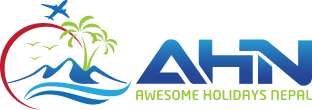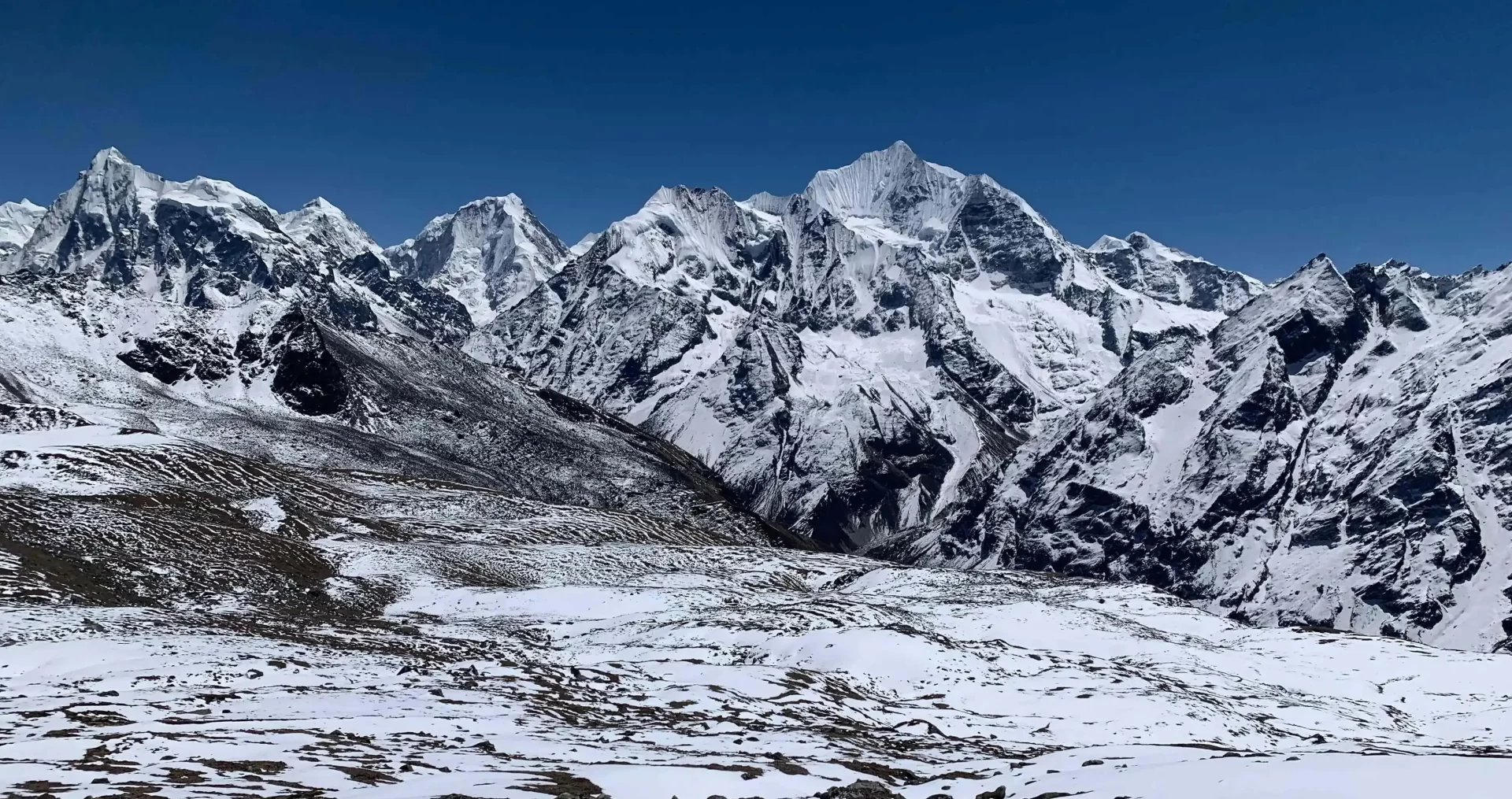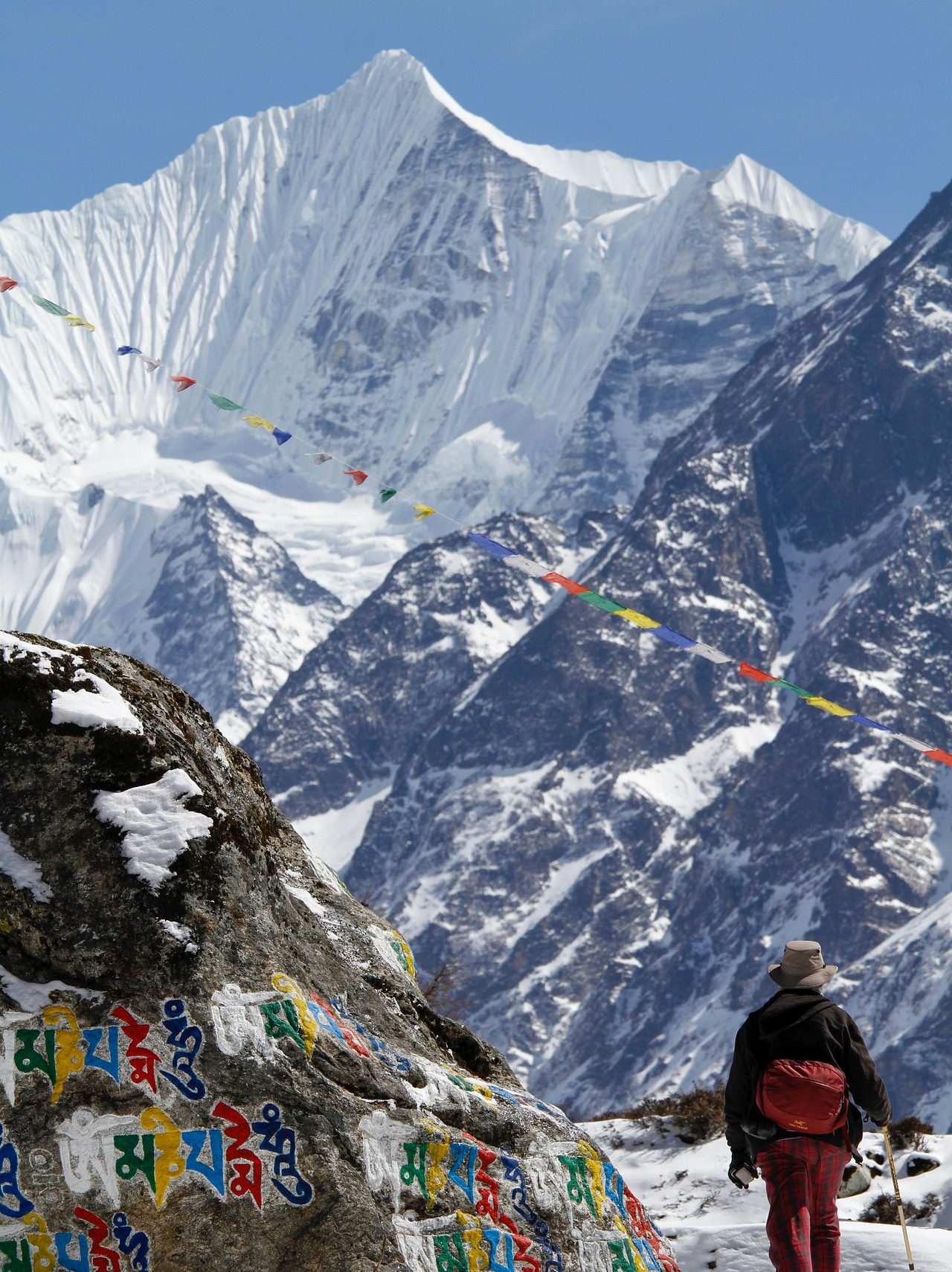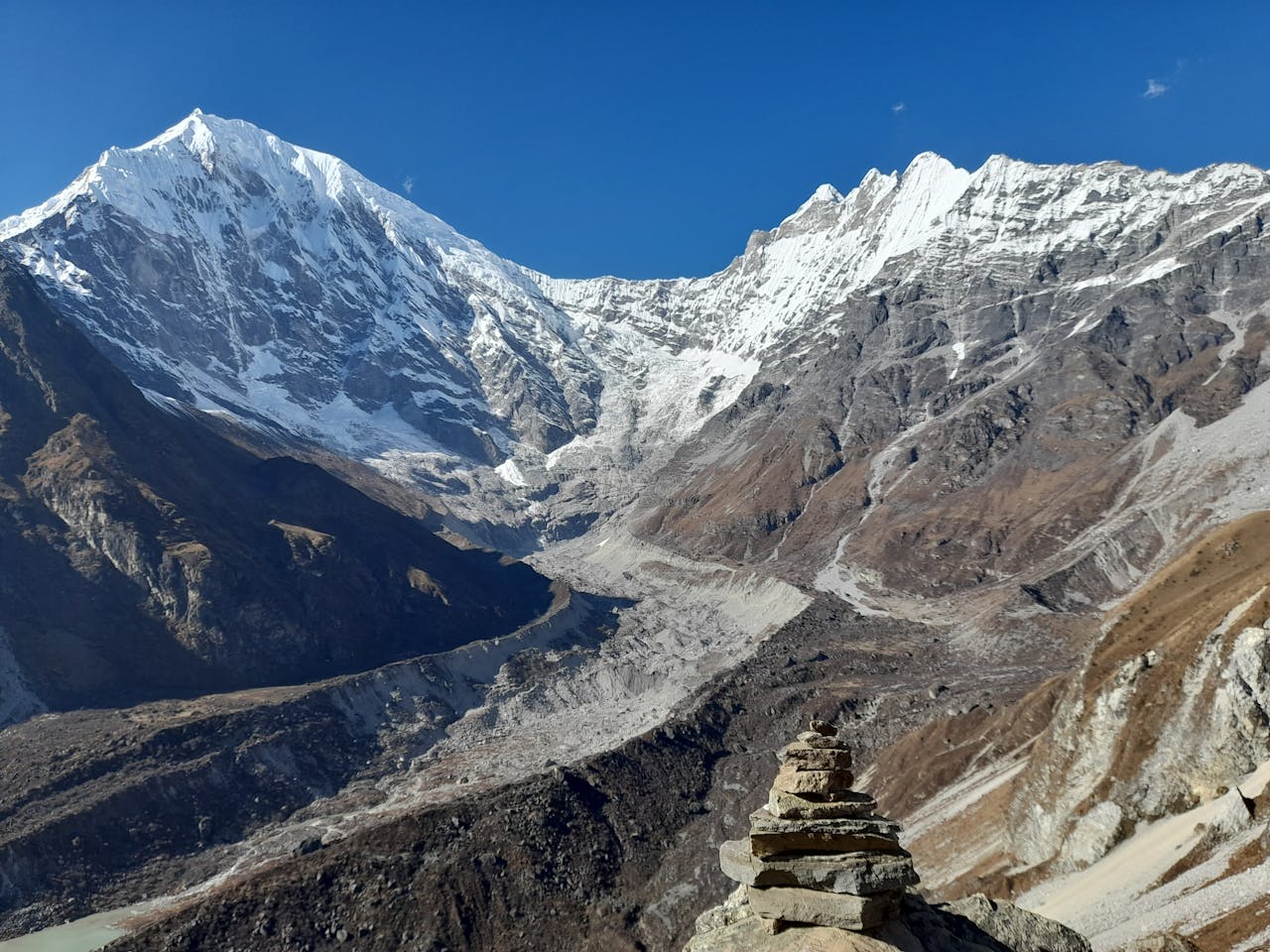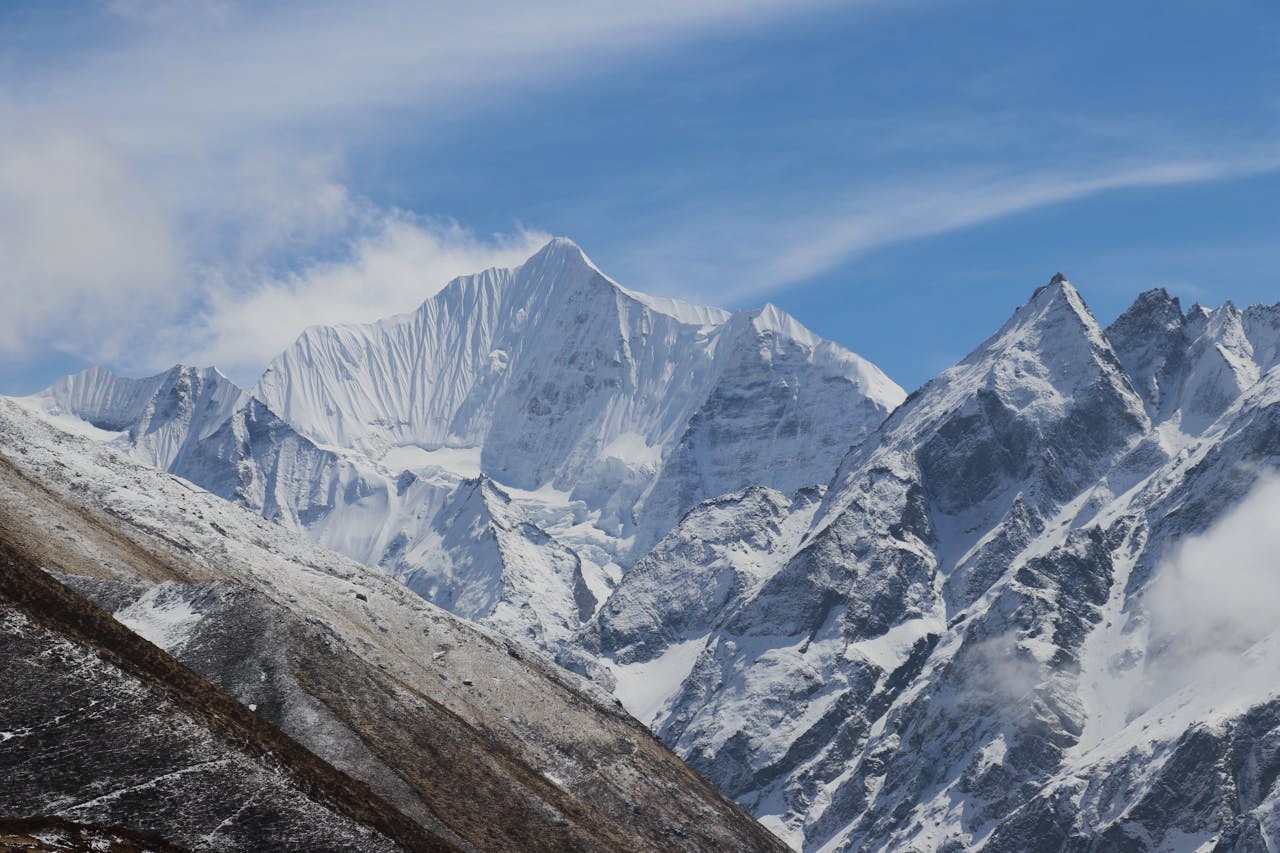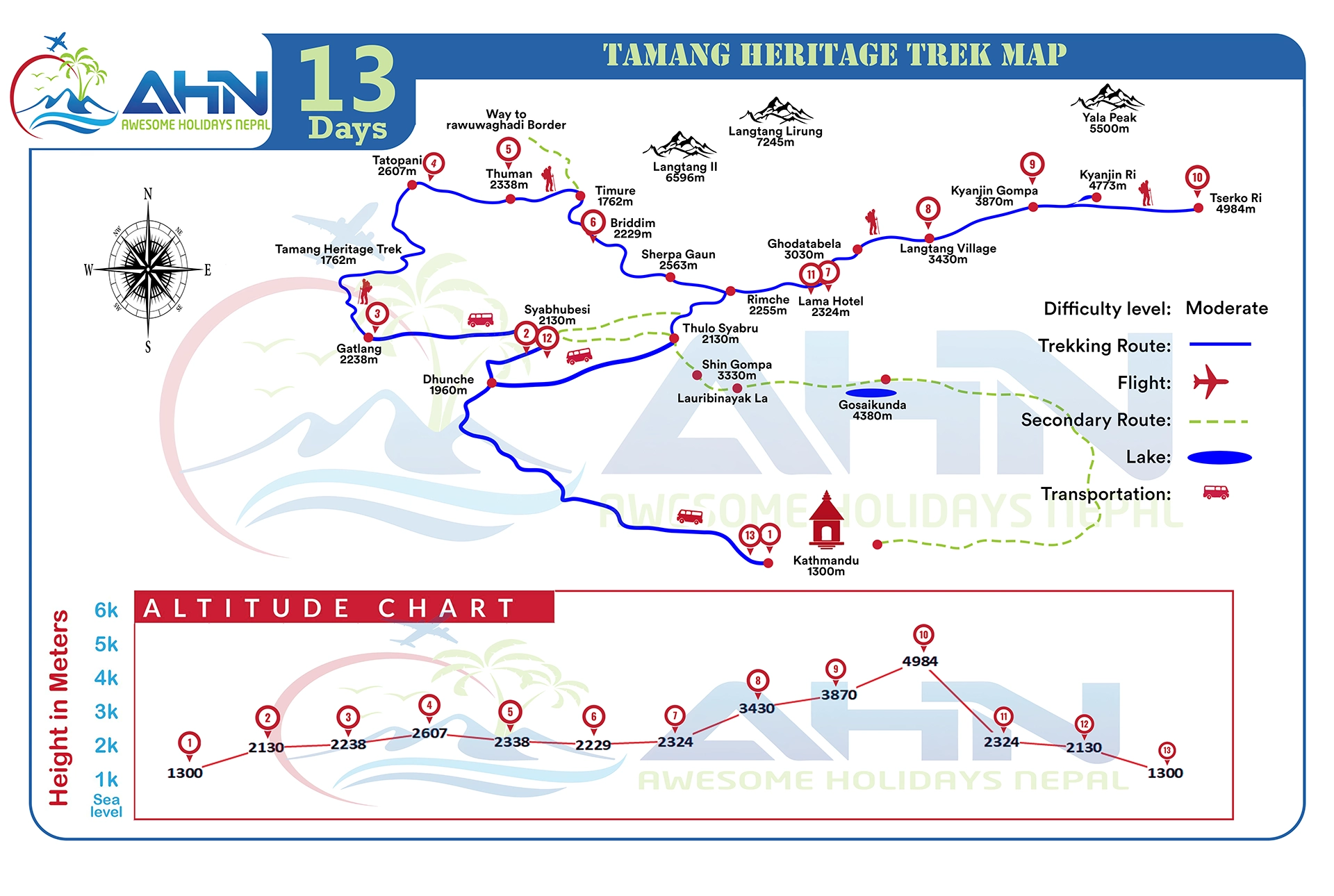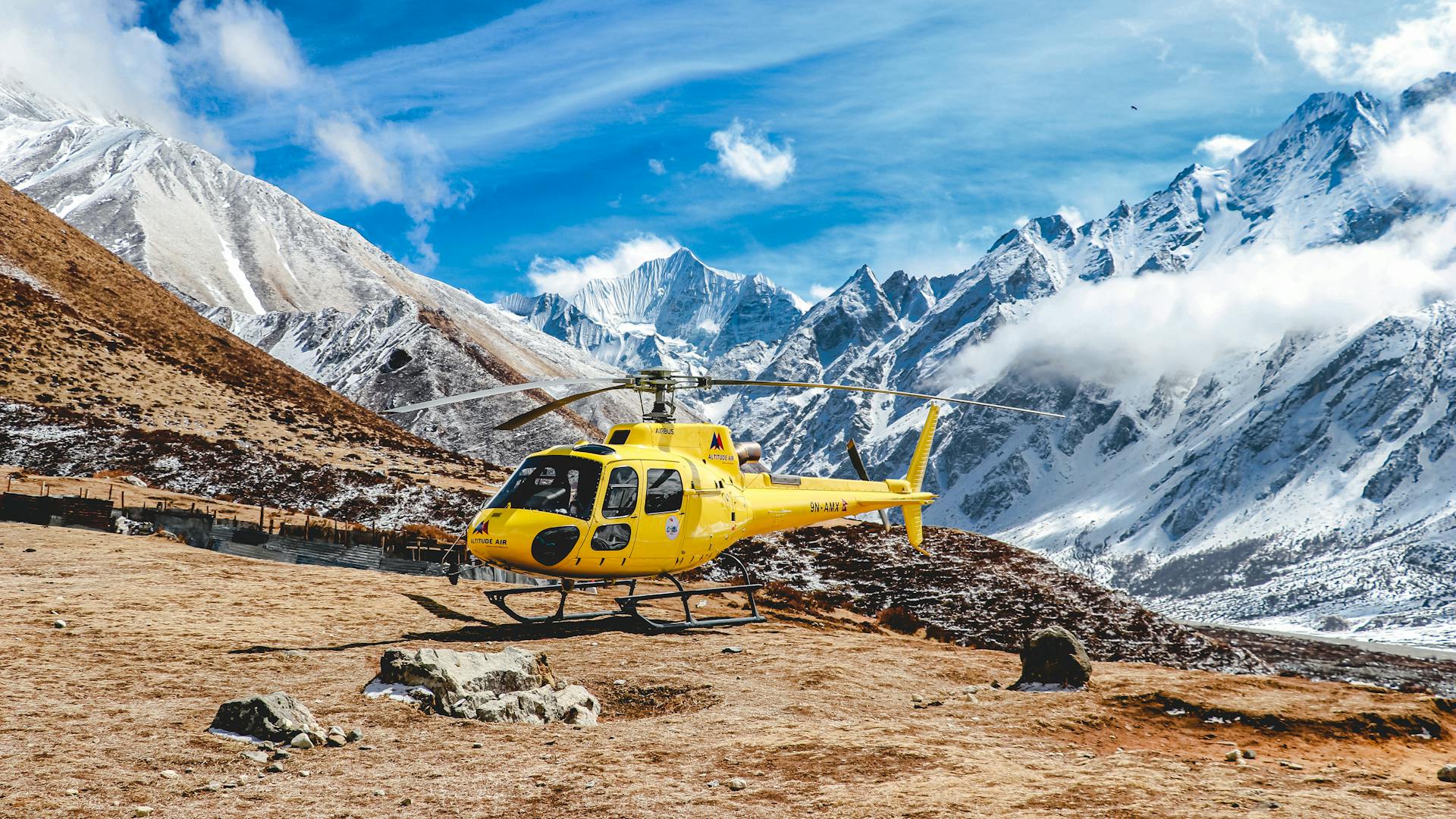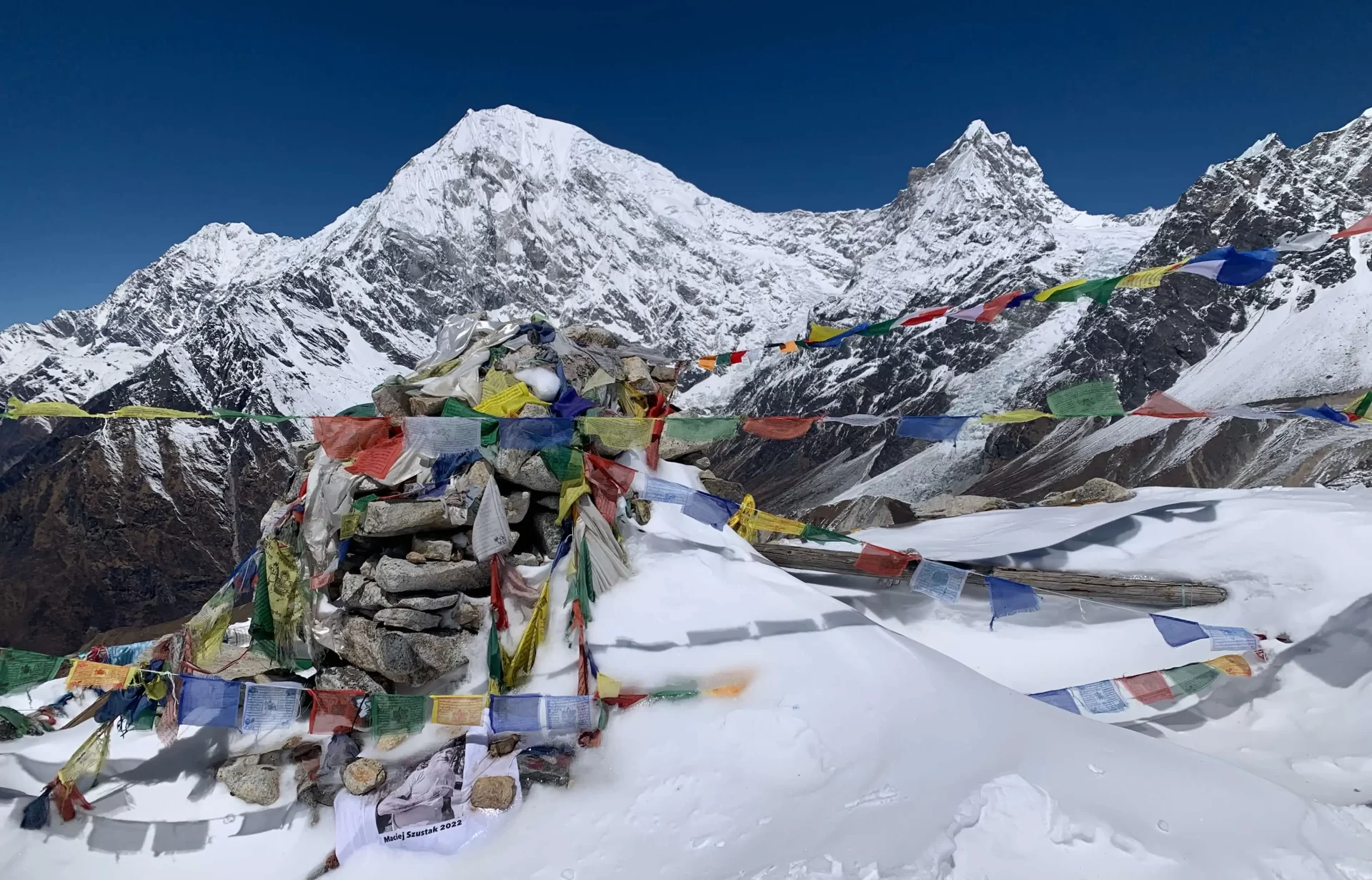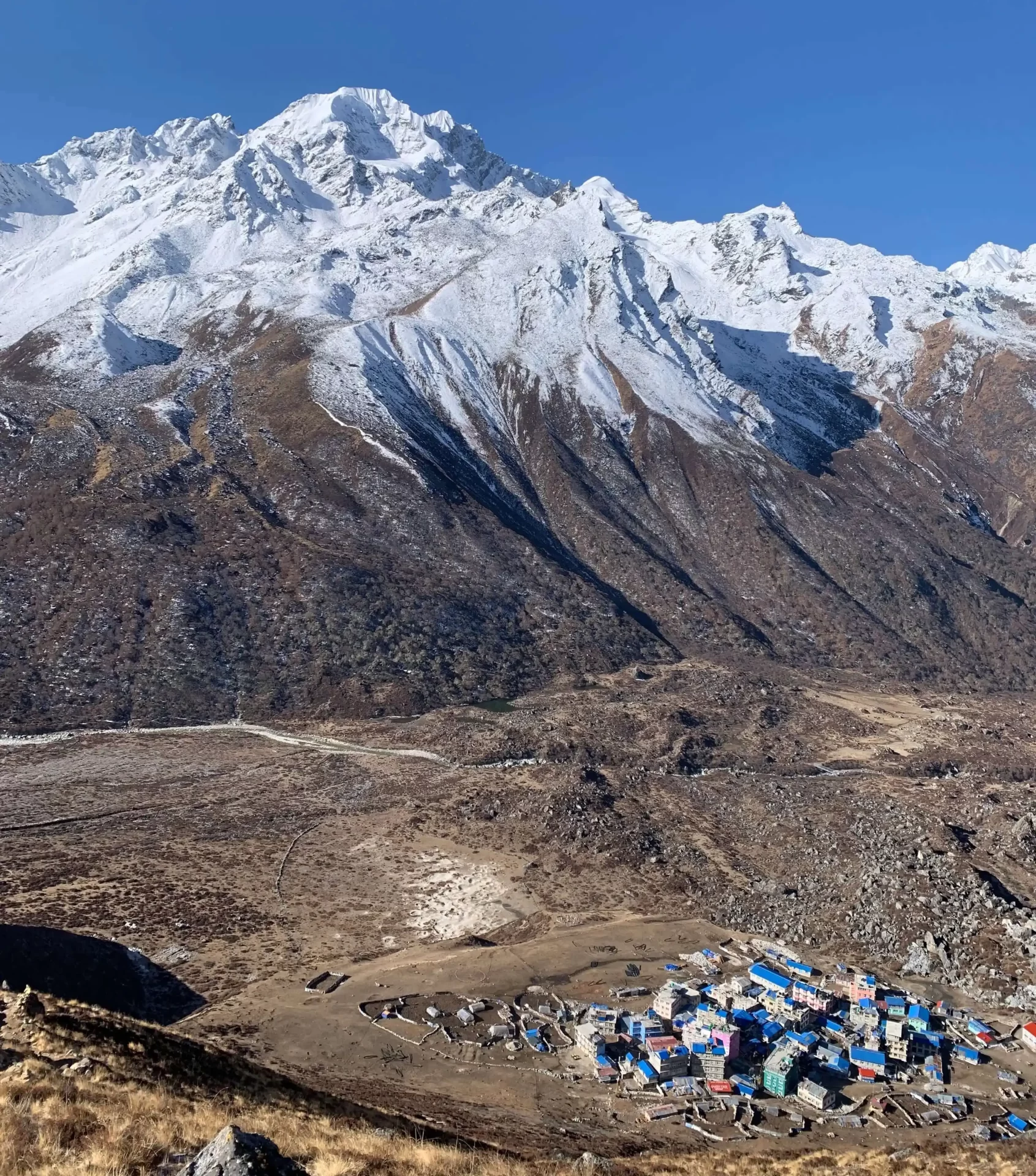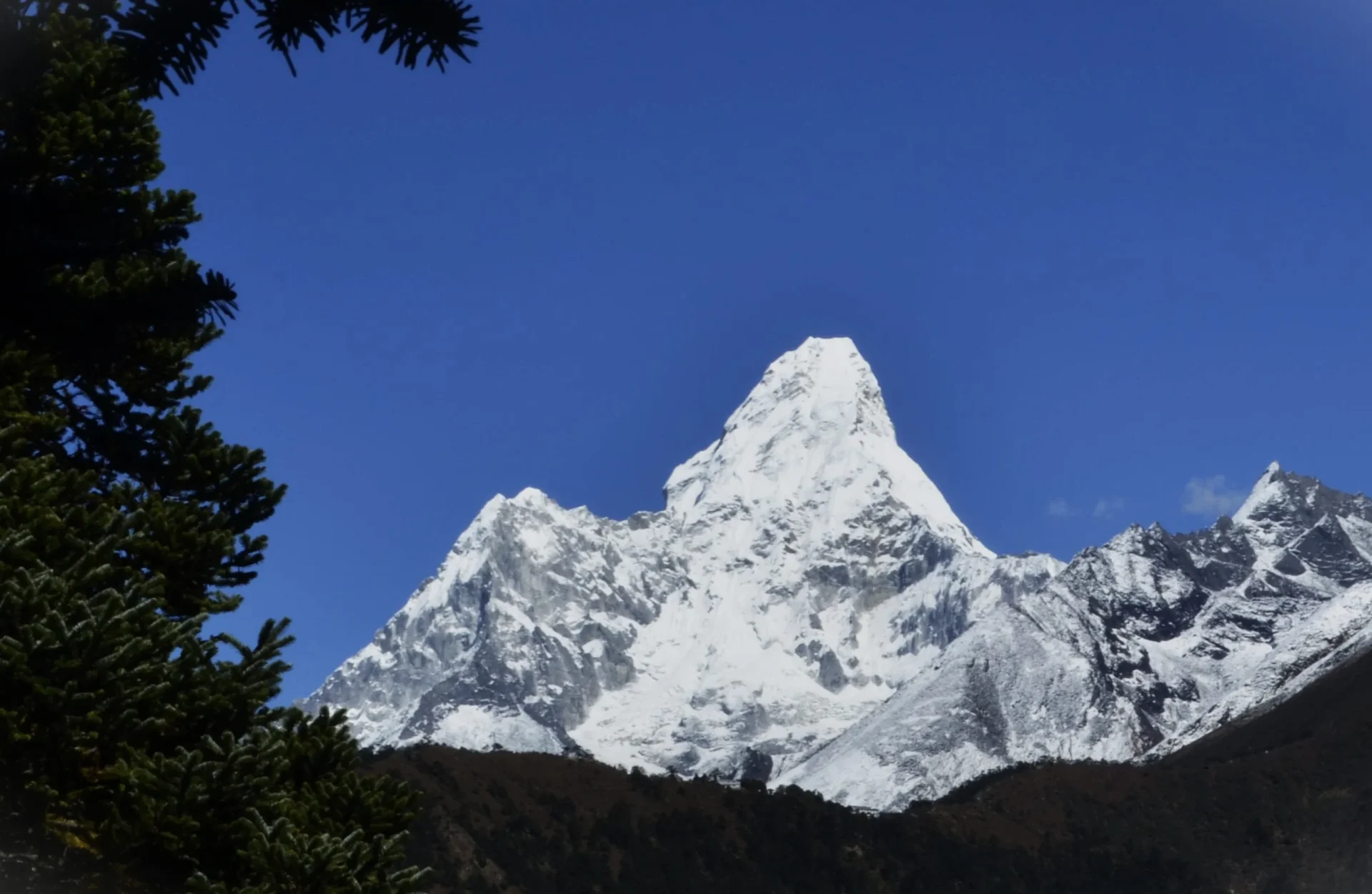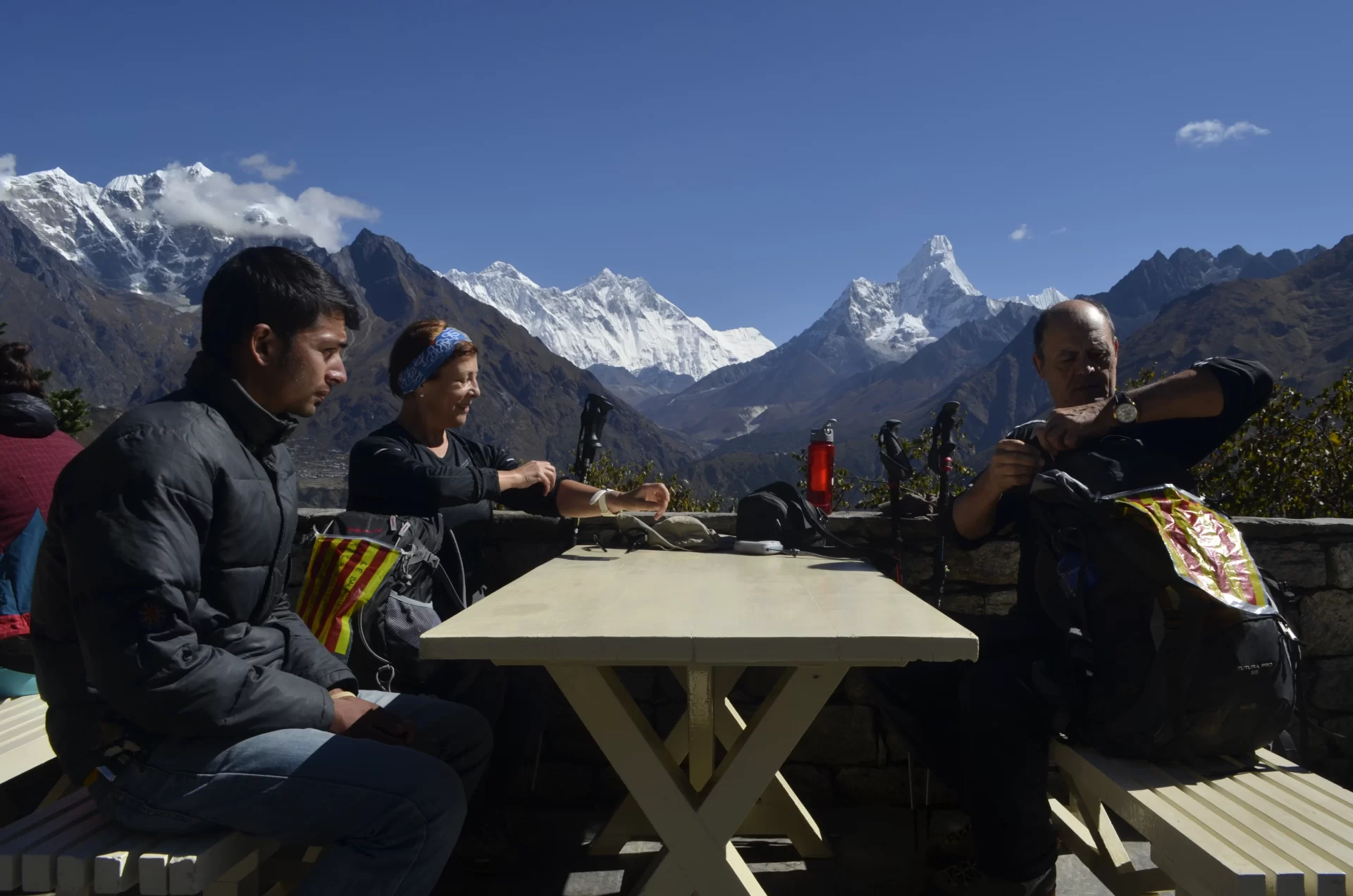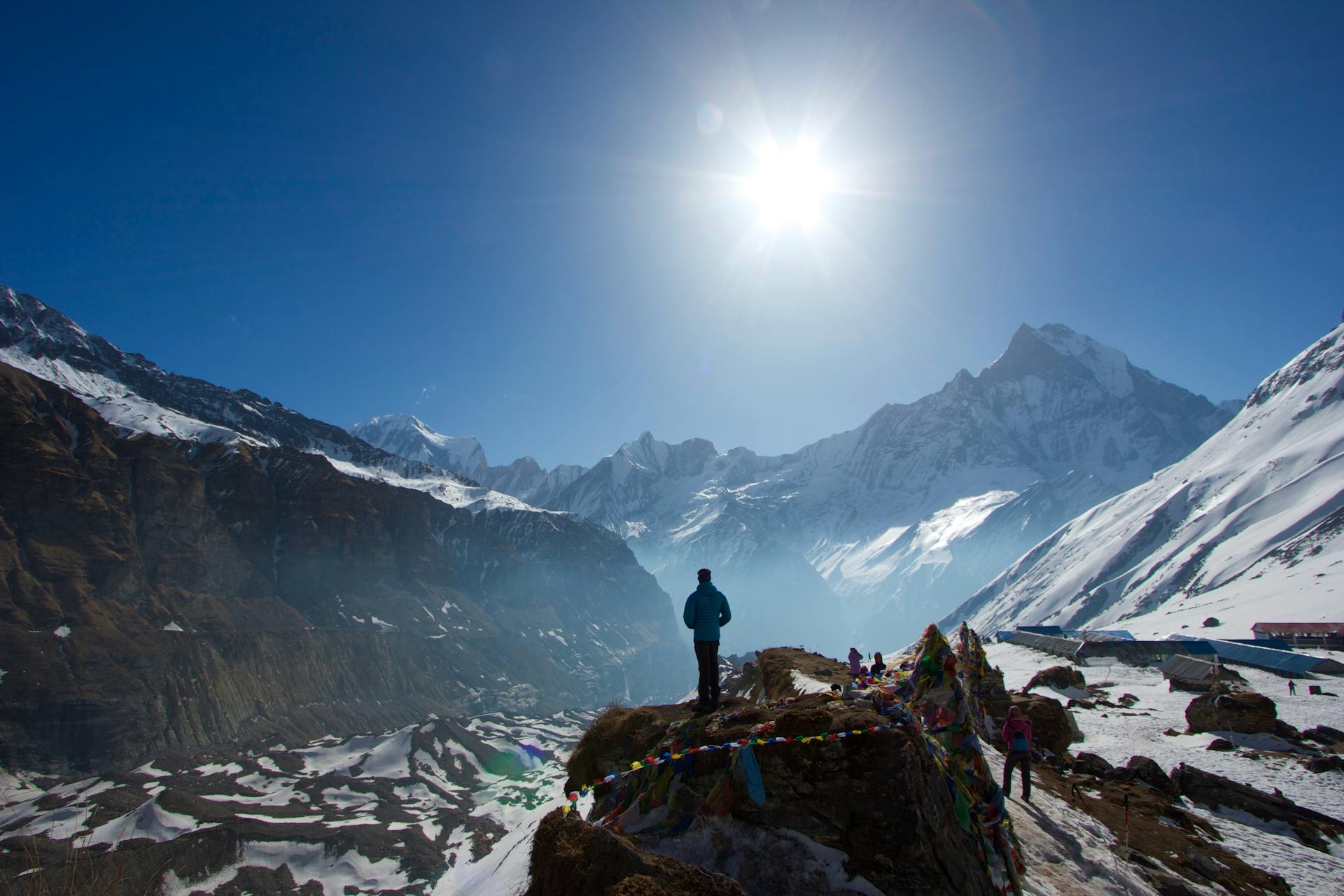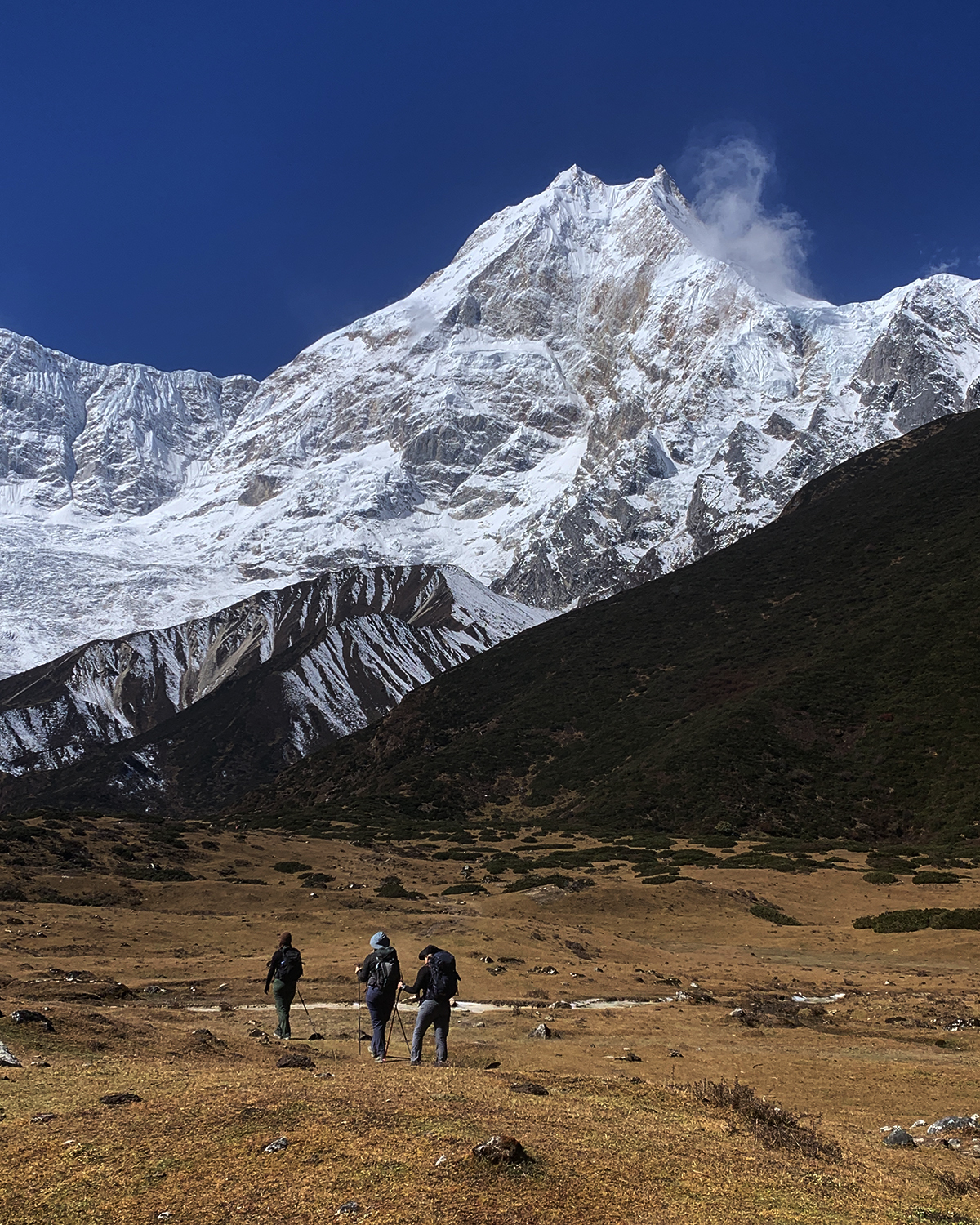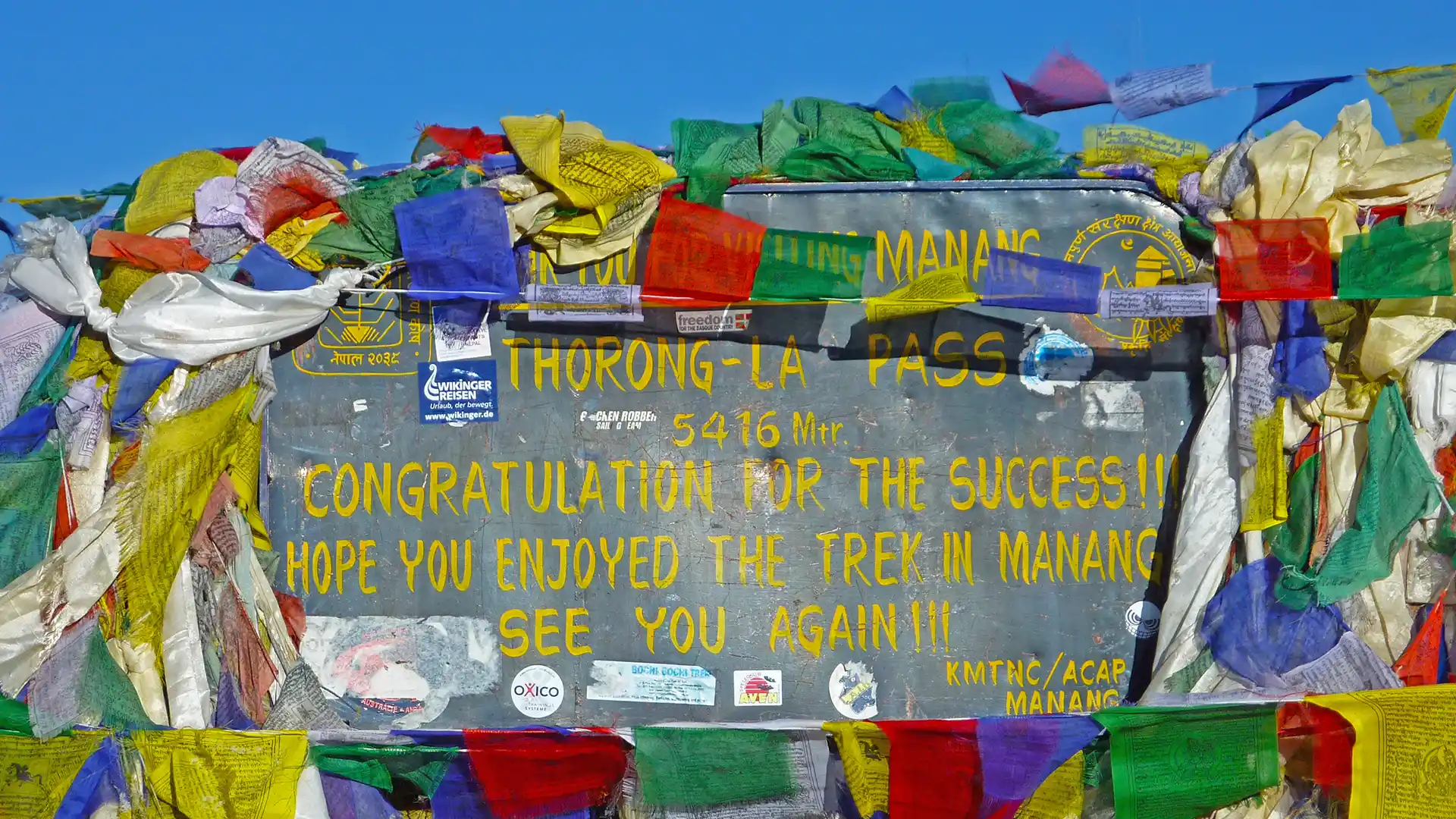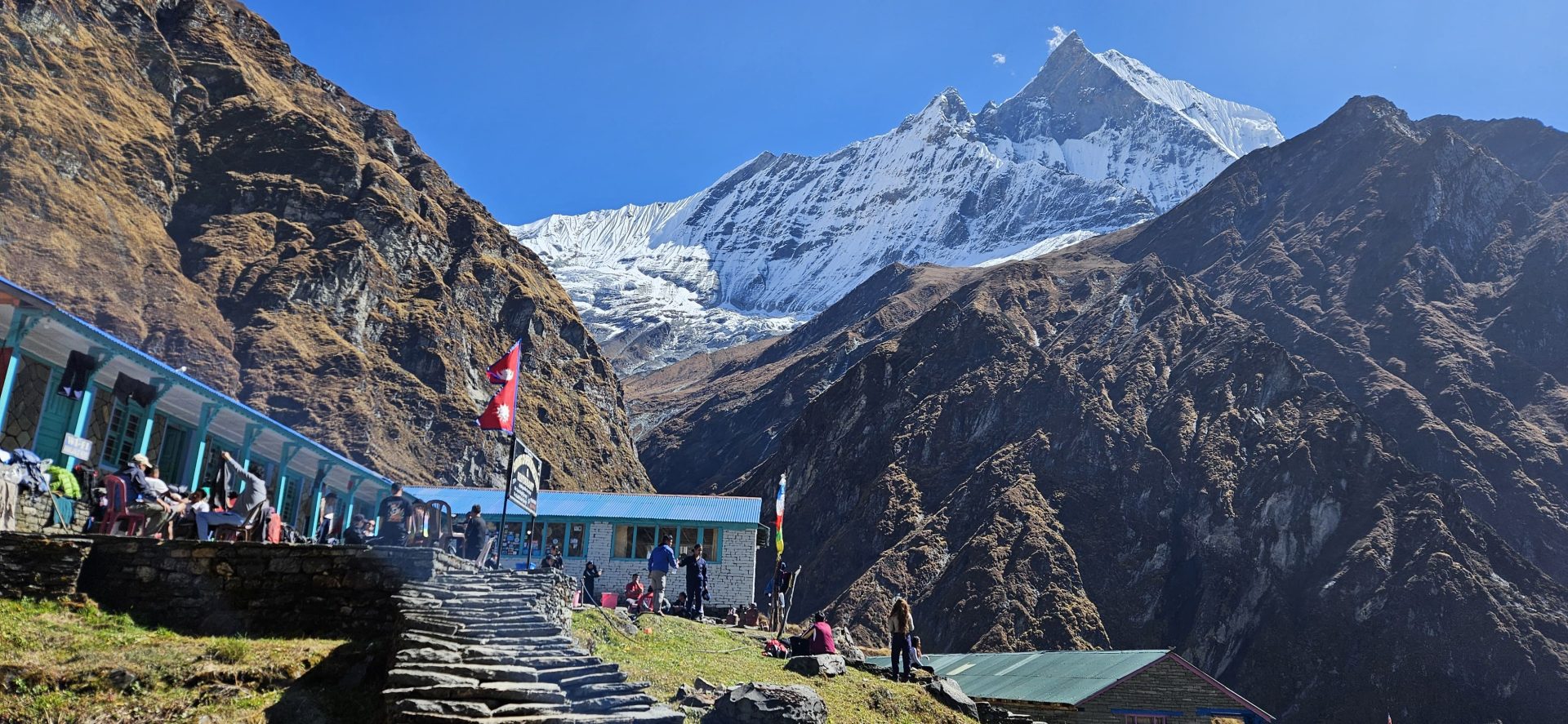Tamang Heritage and Langtang Valley Trek is a 13-day adventurous journey that takes you through luscious rhododendron forests and varying landscapes alongside the flowing rivers. Starting from Kathmandu, this trek first gives you an experience of the ancient traditions and cultural practices of the Tamang people, the ethnic residents of the typical village in the […]
Trip overview
Tamang Heritage and Langtang Valley Trek is a 13-day adventurous journey that takes you through luscious rhododendron forests and varying landscapes alongside the flowing rivers. Starting from Kathmandu, this trek first gives you an experience of the ancient traditions and cultural practices of the Tamang people, the ethnic residents of the typical village in the Langtang region. You will get to explore the monasteries of the area, which represent both the Tibetan and Buddhist cultures that most people in this region follow.
While on the trek, you can enjoy mesmerizing mountain views of the Langtang range and surrounding peaks, such as Langtang Lirung, Ganesh Himal, Yala Peak, and more. If you plan for a summer trek, you will get to trek through the prettiest rhododendron forests with a backdrop of alpine meadows that often feel magical. Along with this, you can enjoy 360-degree captivating mountain views from Tserko Ri while on a trek to Langtang Valley.
Trip highlights
- A challenging and scenic drive through stunning green hills to Syabrubesi, the starting point of the Tamang Heritage Trail.
- The rich biodiversity of Langtang National Park.
- Exploration of rich Tibetan and Buddhist cultures of the Langtang region.
- Enjoy a dip at natural hot springs while on the trek.
- Visit the Langtang region’s ancient monasteries and feel Kyanjin Gompa’s spirituality.
- Cultural immersion and experiencing the lifestyle of the Tamang culture in villages of the Langtang region.
- Panoramic views of Langtang range, Langtang Lirung, Yala Peak, Ganesh Himal, and much more.
- Trek through rhododendron forests beside Langtang River and challenging trails.
Trip Itinerary
Expand AllArrival in Kathmandu
Upon arrival at Tribhuvan International Airport in Kathmandu, our company representatives will greet you warmly and drop you off at your hotel. Later that same evening, you will be introduced to a hint of Nepali hospitality with a welcome dinner at one of the typical Nepali restaurants with a cultural show. During dinnertime, there will be a briefing about your trek details, giving an idea of the thrilling journey ahead in Nepal. This introduction is supposed to set the tone for your adventure, filled with cultural exploration and excitement about what lies ahead.
Drive to Syabrubesi
The actual trip begins early in the morning as you leave the valley for Syabrubesi, your starting point for the upcoming journey. We will take a scenic ride through the rocky roads alongside the Trishuli River and reach Syabrubesi on a shared Jeep ride. There will be short stoppages along the route for resting and taking pictures with a picturesque backdrop of hills, fields, and river banks of the Trishuli River.As soon as we reach Syabrubesi, we will check into our hotel rooms, have our meal, and go to bed early to prepare our bodies for the trek the next day. After this stop, we will continue the rest of our journey on foot.
Trek from Syabrubesi to Gatlang
From Syabrubesi, we will begin our hike in the early morning and pass through scenic trails to the first Tamang Village on the trail, Gatlang. Located at an altitude of 2300 meters from sea level, the village was the first one to be amended by the Nepal government as a tourist destination. You will also find several tea houses, lodges, and community homestays in this village, where you can rest for the night while also enjoying the local tradition
Gatlang to Tatopani
The following day, we will continue the hike to Tatopani from Gatlang, a place known for natural hot springs.However, hot springs aren’t as sophisticated as most hot springs around the globe. Still, people take a dip in the scalding hot water to relax their sore muscles.Tatopani is also a long-time trading route between Nepal and China. The lifestyle and feeding habits of the people here reflect a fusion of Tibetan and Nepalese culture. Likewise, the tea houses in this place are fancier and well-equipped with necessary amenities.
Reach to Thuman via Nagthali
Continuing the journey, we will reach Nagthali Hill, which stands at an altitude of 3300 meters from sea level. It is an open grassland and offers captivating panoramic views of the mountains of the Langtang region. After a short break with a view, the trek continues to the next cultural village. The Thuman village is quite a candy to the eye, with ancient-styled houses and friendlier people. You will also get to see a few Tamang monasteries built in Tibetan style that are worth capturing with the lenses.
Trek from Thuman to Briddhim
After enjoying the warm hospitality in Thuman village, we will trek towards another equally fascinating village. Briddhim village is also quite a popular cultural heritage for storing community bondage and services. People of this village truly rely on Homestays and lodges, which is why you will most likely find a lot of amenities and warm hospitality.You will have an opportunity to interact with the Tamang people of this village and get accustomed to their well-preserved culture and traditions. Our Tamang heritage trek ends after this stop; thus, we will spend a little more time and enjoy our stay in this local village.
Trek from Briddhim to Lama Hotel
Wrapping up our heritage trail, we will begin a new excursion to Langtang Valley. We will take a trail to Lama Hotel from Briddhim, which offers a mesmerizing backdrop of Langtang Lirung mountain. After a 6-7-hour trek, we will arrive at the infamous Lama Hotel, which has become a landmark on this trail.The Lama Hotel’s major attractions are the rhododendron and oak forests, small settlements, and flowing rivers. We will rest at this stop before continuing the journey.
Reaching Langtang Village
Early in the morning, we will trek through Langtang National Park to reach Langtang village, passing through dense forests and village settlements. On this trail, you will also come across Ghoretable, a horse stable. You can take a short tea break and enjoy scenic, peaceful surroundings here.Moving on, the journey continues to Langtang village, which is quite a stunning place to be with the surrounding mountains and refreshing sights of greenery. You are most likely to see Langtang Lirung and Ganesh Himal from this village, along with the culture and hospitality of the Tamang people.
Trek from Langtang Village to Kyanjin Gompa
We will continue the trek from Langtang village to Kyanjin Gompa to get more fascinating views of the mountain. Kyanjin Gompa is not just a mere stop but also a monastery that beholds the religious values of Buddhists living here. You will see many Buddhist artifacts, prayer flags, Chortens, and rocks carved with inscriptions around this location. The spirituality of this area and surrounding mountains is worth appreciation.
Trek from Kyanjin Gompa to Tserko Ri and Back
Your trek to the Langtang region isn’t complete unless you enjoy the exhilarating yet fantastic hike to Tserko Ri. It is a high-altitude ridge situated 5000 meters above sea level that offers a view of mountains and frozen lakes.The breathtaking view of Langtang Valley from this highest point is also worth taking a peek. After lunch and enjoying the view of Langtang Ranges, Dorje Lakpa, and Langtang Lirung, we will return to Kyanjin Gompa and stay the night there.
Return Back to Lama Hotel
After the religious excursion to Kyanjin Gompa, we will trek back to the Lama Hotel and rest all tired muscles. While in the locality, you can enjoy a calm day beside the Langtang River and recall the trek you just completed.
Lama Hotel to Syabrubesi
Giving an end to our challenging yet pleasant trek, we will retrace our steps back to Syabrubesi. On this trail, you will pass the Bamboo Forest and Rimche before finally reaching the endpoint.
Drive Back to Kathmandu
After resting in Syabrubesi, we will drive back to Kathmandu in a shared Jeep early in the morning. Upon arrival, we’ll drop you off at your hotel and enjoy a day of relaxation. Alternatively, we can explore more of the city’s vibrant culture and attractions. This day marks a peaceful and reflective end to our Nepal adventure, allowing us to unwind after our trek.
Trip Cost Includes
- Airport pickup and drop off (both domestic and international)
- Welcome/Farewell dinner at Kathmandu.
- Stay at teahouses/ guesthouses on the trek on a twin-sharing basis (single room available with an extra charge)
- Standard meals during the trek include Breakfast, Lunch, and Dinner.
- 1 English speaking professional guide throughout the trek
- Porters to carry your duffel bag. 2:1 ratio for Guest to porter.
- Local Jeep from Kathmandu-Syabrubesi-Kathmandu
- Purifies drinking water during the trek using a water purifier or chemical purifying tablets.
- All necessary permits for the Tamang Heritage Trek with Langtang.
- First-aid treatment in case of any emergencies.
- All administrative expenses and government taxes.
Trip Cost Excludes
- Accommodation or meals in Kathmandu except for the welcome/farewell dinner (can be arranged on request with additional charge)
- International flight fares and airport departure tax.
- Bottled water or any beverage.
- Tourist visa for entry in Nepal.
- Travel insurance and the emergency evacuation service charges.
- Personal expenses, including personal gear or equipment.
Trip date and time
Select a Departure Month
| Dates | Availability | Price |
|---|
| Dates | Availability | Price |
|---|
| Dates | Availability | Price |
|---|
| Dates | Availability | Price |
|---|
| Dates | Availability | Price | ||
|---|---|---|---|---|
|
From: Fri, 5th Sep, 2025 To: Wed, 17th Sep, 2025 |
Available |
US$ 1340 | Join now | |
|
From: Fri, 12th Sep, 2025 To: Wed, 24th Sep, 2025 |
Available |
US$ 1340 | Join now | |
|
From: Fri, 19th Sep, 2025 To: Wed, 1st Oct, 2025 |
Available |
US$ 1340 | Join now | |
|
From: Fri, 26th Sep, 2025 To: Wed, 8th Oct, 2025 |
Available |
US$ 1340 | Join now |
| Dates | Availability | Price | ||
|---|---|---|---|---|
|
From: Fri, 3rd Oct, 2025 To: Wed, 15th Oct, 2025 |
Available |
US$ 1340 | Join now | |
|
From: Fri, 10th Oct, 2025 To: Wed, 22nd Oct, 2025 |
Available |
US$ 1340 | Join now | |
|
From: Fri, 17th Oct, 2025 To: Wed, 29th Oct, 2025 |
Available |
US$ 1340 | Join now | |
|
From: Fri, 24th Oct, 2025 To: Wed, 5th Nov, 2025 |
Available |
US$ 1340 | Join now | |
|
From: Fri, 31st Oct, 2025 To: Wed, 12th Nov, 2025 |
Available |
US$ 1340 | Join now |
| Dates | Availability | Price | ||
|---|---|---|---|---|
|
From: Fri, 7th Nov, 2025 To: Wed, 19th Nov, 2025 |
Available |
US$ 1340 | Join now | |
|
From: Fri, 14th Nov, 2025 To: Wed, 26th Nov, 2025 |
Available |
US$ 1340 | Join now | |
|
From: Fri, 21st Nov, 2025 To: Wed, 3rd Dec, 2025 |
Available |
US$ 1340 | Join now | |
|
From: Fri, 28th Nov, 2025 To: Wed, 10th Dec, 2025 |
Available |
US$ 1340 | Join now |
| Dates | Price | Availability |
|---|---|---|
|
Select Date:
Please select the date |
US$ 1340 |
Packing List for Tamang Heritage and Langtang Valley Trek
The key is to prioritize lightweight, durable, and versatile gear. It's important to test and familiarize yourself with your equipment before embarking on a trek. If you find a particular brand that meets your criteria for quality, that's great, but always prioritize functionality and reliability.
General
- Sleeping bags (zero degrees)
- Backpack with rain cover (recommended size about 35-45 liters)
- Sleeping bag liner
- Duffel Bag (can be rented)
Basic Clothing
- Warmers and a technical fabric base layer
- Comfortable pants
- Sleeping wear/night suits
- Undergarments & sports bra
Warm Clothes
- Body warmer tops and pants
- Fleece jacket/pullovers
- Warm pants
- Wool or technical fabric
- Hard shell outer gloves
- Warm caps/Knitted hats
Feet protection
- Hiking socks
- Liner socks
- Wool or
- Casual shoes
- A pair of slippers
- Ice cleats/Microspikes (for trekking on wet surfaces, specifically from November to March)
- Gaiters (for winter treks)
Snow/Rain Protection
- Waterproof/Windproof jackets
- Waterproof/Windproof pants
- Hard-shell outer gloves
- Raincoats
Sun Protection
- Caps or Sun hat
- Sunglasses
- Shades (preferably polarized)
- Sunscreen
Trekking Gears
- Hiking poles
- Headlamps
- Technical fabric short and long sleeve shirts
- Technical fabric base layer for lower body
- Hiking pants
- Hiking shorts
Essential Medicine & First-aid
Even though your trekking guide will carry the necessary medications for altitude sickness and first aid kits to help in case of any accidents, you also need to have personal kits. A personal first aid kit needs to have the following elements:
- Cough syrups
- Ointment
- Cough syrup
- Ointments
- Antiseptic creams
- Mosquito repellents
- Electrolyte
Other Necessities
- Toiletry kit
- Passport
- Extra copies of passport-sized photos (required for permits and other docs)
- Reusable water bottle
- UV water purifier or Water purification tables
- Hydration bladder
- Towel
- Pillowcases
- Waterproof bags (for carrying money and necessary documents)
Optional Equipment
- Cameras and mobile phones
- Power banks (preferably solar-charged)
- Binoculars
- Pee funnel and pee bottle
- Whistle
- Thermos bottle for hot drinks and water
- Binoculars
- Cards/books/diaries
Trip FAQs
Expand AllWhen is the best time to trek to Tamang Heritage with Langtang?
The best time to trek Tamang Heritage with Langtang is during the Autumn and Spring seasons, as the climate is favorable and the trekking route is rich in luscious greens. For a safe, memorable, and awesome experience, plan a trek between mid-September and November or March and June. However, the trek is possible all around the year. If you can avoid rainstorms and sustain extreme temperatures, you can ascend during colder months to avoid the crowd.
How long does the trek take?
The Tamang Heritage trek with Langtang Valley usually takes 13 days to complete. However, the trek duration might vary depending on your chosen route and the packages you booked. If you have time constraints, you can customize this trek to suit the number of days you have available.
Do I need to book in advance?
Though it might not be mandatory, booking your base camp trek in advance is better to ease the process, specifically if you plan for trekking seasons, as mentioned above. Booking in advance secures your spot and ensures you and your trekking company are well-prepared for the trek. However, getting the trekking permits, booking accommodation and transport, and getting your visas might take time.
What kind of fitness level is required?
The Tamang Heritage Trek with Langtang requires a moderate fitness level since you will walk at least 6-7 hours a day. You will also require good cardiovascular endurance and muscular strength to ascend quickly through rough terrain. If you aren’t somebody who doesn’t perform physical training regularly, it is better to start training at least ¾ months in advance. Ensure you include cardio, flexibility exercises, and strength training in your workout to prepare your body for the trek.
What permits are required?
To trek through the Tamang Heritage Trail with Langtang Valley, you will require two passes: the Langtang National Park Entry Permit and the TIMS card. These passes can be obtained easily from the Tourism Board of Nepal.
How much does the trek cost?
The Tamang Heritage Trek with Langtang Valley costs approximately $1100. However, the cost may vary depending on how you customize your food and accommodation, the variation of the trekking package, and the routes you choose. The trekking cost doesn’t include any personal expense or charge for the services made upon request. Please check the packages for the price and find the amenities/services offered.
Do I need travel insurance?
It isn’t mandatory to take travel insurance for the Tamang Heritage Trek with Langtang, but it is advisable to do so to prepare in advance for possible catastrophic situations.
Can I customize my itinerary?
Yes, you can customize your itinerary according to your needs. We can add or minimize the acclimatization days, optimize the trekking route, and shorten or elongate the trek as you prefer. However, if you have booked for our regular trekking package that moves as a group, customizing the itinerary just for an individual isn’t possible.
What is the best way to train for the trek?
Some of the best ways to train for the trek are through regular cardio, focusing on breathing exercises, strength training, lifting weights, hamstring sketching exercises, and so on. You can also switch to climbing stairs instead of lifts, walking, or jogging instead of driving to smaller distances to prepare your body. Additionally, going on regular hikes or climbing up the hills can be the best way to train for the trek.
What kind of gear do I need?
Do I need vaccinations?
It isn’t mandatory to get any vaccinations to trek to the Tamang Heritage Trek with Langtang Valley. However, you can check your country’s travel regulations and vaccinate yourself before visiting Nepal. Typically, routine vaccines are available, including those against Malaria, Japanese Encephalitis, Hepatitis A, Hepatitis B, Typhoid, Rabies, and Cholera.
What currency should I carry?
For any personal expenses other than those offered by the trekking company, you will need Nepalese rupees for your trek. However, having some USD or your home currency as a backup for emergencies or returns is better. Make sure to exchange your currencies for Nepali rupees in Kathmandu to find the best rates.
Do I need a visa for Nepal?
To travel to Nepal, you will need a “Tourist Visa.” This visa is available on arrival for most foreign visitors except those from African countries, Afghanistan, and refugees with travel documents. Check the official website of the Department of Immigration for information regarding On Arrival and other tourist visas in Nepal.
Is it possible to trek solo?
It is possible to trek solo to the Tamang Heritage Trek with Langtang Valley. However, you must be prepared to adapt to the exciting yet exhilarating trek, and you will need additional physical and mental strength to do so. A solo traveler must get the required documents to get the permit.
What is the trek route like?
The trekking route to the Tamang Heritage Trek with Langtang Valley consists of rough rocky terrain, steep hills, stairs, and narrow trails. You will encounter suspension bridges, a biodiversity conservation area, luscious green forests, and locally inhabited villagers along your path.
What kind of accommodation is available?
While standard, three-star, and five-star accommodations are available in Kathmandu, the options might be restricted on the trekking route. You will most likely find tea houses with clean rooms along the route. And yes, it is possible to get private rooms or rooms with attached bathrooms, but you will have to pay an extra charge.
Is there electricity and Wi-Fi available?
Yes, electricity and Wi-Fi are available in most teahouses en route to the Tamang Heritage Trek with Langtang Valley. However, accessing internet services and charging your devices at these stops might be costly, and the reliability of the connection is questionable, too. You can carry rechargeable solar batteries for electricity.
How much luggage can I carry?
Since you will be traveling by road, there is no such restriction in the luggage that you can carry. However, we suggest you carry a lighter weight to ease the trek.
What is the food like on the trek?
The guesthouses and teahouses primarily serve Nepali, Tibetan, Thakali, and other ethnic cuisine, which primarily include Rice, Pulses, Bread, Noodles, Soup, Pasta, and Pastries. You will also have the option of drinks and continental cuisine.
Are there showers available?
Yes, showers are available on the Tamang Heritage Trek for an extra $2-$5 charge. Even the remote villages offer a pail of hot water for a few dollars, but it’s recommended that you avoid showering at higher elevations.
Can I charge my electronics?
There are provisions for charging your electronics in rest houses, teahouses, or local stays. But remember to carry the required adapters (C type and D type) to fit your chargers.
What kind of toilets are available?
En route to the Tamang Heritage Trek with Langtang Valley, the teahouses have clean but fundamental squat toilets. In emergencies, private areas along the trail can also relieve the pressure.
Is it possible to do laundry on the trek?
Yes, doing laundry on the trek to the Langtang region is possible. However, the water is cold, so we suggest you do not do it unless necessary. Packing enough clothes is better than looking for laundry in elevations with cold water.
Can I buy snacks and drinks on the trek?
You are less likely to find a store to buy snacks and drinks on the trek as it is a remote area inhabited by fewer people. However, the tea houses along the trail do sell biscuits, candies, and other snacks. We advise you to carry protein bars, dried nuts, and fruits to snack when you want. You can bring a refillable bottle with a filter to drink water from sprouts or springs along the way.
Are there ATMs along the trail?
You can find ATMs only in Dhunche and Syabrubesi. Other than that, there are no ATMs along the Annapurna Base Camp trail.
How do I deal with altitude sickness?
If you get altitude sickness on your way to the ABC, let your trekking guide know about the situation. The guides are prepared with first aid required for such a situation. Rest at the same spot and take anti-sickness medications. After you feel a little better, descend to a lower altitude. In case the situation worsens, ask the guide to contact the head office in Kathmandu for a helicopter rescue.
What should I pack for the trek?
You should pack warmer clothes, trekking gear, all your necessary medications, and your travel documents for the trek. Additionally, you should pack protein bars, dry nuts, and fruits for snacking on the trek, along with a refillable water bottle. Even though the company will provide you with packaged water bottles along the journey, it is convenient to carry your own.
Are there medical facilities along the way?
Medical facilities are very limited en route to the Annapurna Base Camp. You can find limited medical services in major stops such as Pokhara. We suggest you carry all necessary medications in your backpack before you board the flight or drive to Pokhara.
Is it safe to drink the water?
Water from natural sources looks clean in the Annapurna Base Camp, but drinking it might not be safe. You can purify the water using bottle filters, chlorinate it, or boil it to make it potable.
What should I do in case of an emergency?
In case of emergency, the first thing you can do is contact our trekking guide. Our trekking guides are equipped with oximeters and necessary first-aid kits and trained to handle any kind of emergency. Besides, the guides will have all the necessary contacts to reach out to emergency rescue services such as helicopter rescue, air ambulance, or land rescue.
How can I prevent altitude sickness?
The best way to prevent altitude sickness is to take proper rest after your trek, acclimatize to the altitude, stay hydrated, and avoid alcohol while on the trek.
What should I do if I experience altitude sickness?
Whenever you feel sick due to altitude, stop immediately and rest for a while. Hydrate yourself and take medications to ease the pain. You should never try to ascend or descend right away whenever you are experiencing altitude sickness. Let your trekking guide know about your situation and request an emergency rescue in case the condition worsens.
What medications can help with altitude sickness?
Acetazolamide (usually sold under the name Diamox) can help you with altitude sickness. As it reduces the severity of any observed symptoms as well as helps you adjust to high altitude quicker, Diamox is often suggested to treat acute altitude sickness. Some other medications that can also help are Dexamethasone, Nifedipine, and Ibuprofen. It is safe to consult your physician and take the medications in advance to prevent allergies or any undesired reaction against the drugs.
What other health concerns should I be aware of?
You should be aware of any medical conditions that you might have before planning the trek. If you have pulmonary diseases, asthma, or any other breathing-related illness, it’s better to get it checked and prepared in advance with medication and stimulatory exercises. Additionally, you should be aware of any allergies you might have before you trek. To prevent illness on the route, it is always best to avoid food, drinks, or agents that can instigate a hypersensitive reaction in your body.
Is it safe to trek alone?
It isn’t too safe to trek alone in the wilderness. If you are planning to trek to high-altitude mountains like the Annapurna Base Camp, which can often have unpredictable weather, is prone to natural calamities, and involves risky and rough terrains, it isn’t safe to travel solo. If you know the route very well and are mentally and physically prepared to trek alone, go for it. Otherwise, it is recommended to take along a travel guide who knows the route well to have a smooth trekking experience.
What should I do if I get injured?
If you get injured during the trek, stop for a break and take the necessary first aid. If you have a serious injury that needs immediate attention, call for emergency rescue with the help of your trekking guide.
Are there any dangerous animals on the trek?
Since the trekking route takes you through conservation areas, it is obvious to see animals on the route. Although it is less likely to find a dangerous animal on the trail, it isn’t impossible. Leopards, cheetahs, musk deer, etc can often inhabit mountainous regions. It is better to travel in groups in such forest areas to come across one. But in case you did, don’t just run or instigate the animal, let it pass before you move.
What is the weather like on the trek?
If you are trekking to the mountainous region above an elevation of 5000 meters, such as the Annapurna Base Camp, the weather can be quite unpredictable. Usually, the temperature is lower and can drop to freezing at night. Besides, the higher elevation areas often have snow storms, soft rains, and chilled breezes.
Is the trek physically demanding?
Yes, indeed! The trek to Annapurna Base Camp takes you to an elevation above 3000 meters where the temperature is low, oxygen is scarce and the terrain is rough and risky. You must be physically fit and mentally composed to complete the trek successfully.
Trip Reviews
Login to ReviewWhat makes this trip different ?
 Environment-Friendly Initiative
Environment-Friendly Initiative
- Awesome Holidays Nepal believes in contributing to the wellness of the environment while promoting adventure and tourist destinations in Nepal.
- For every visitor who books a trip or trek with us, we plant a fruit tree in barren lands in collaboration with community forests.
 Giving Back to the Community
Giving Back to the Community
- Awesome Holidays believes that the native residents know any destination better than an outsider. Thus, the guides, porters, and travel companions who will serve you through the trek or tours are local residents of that particular region.
- As a part of our communal service, Awesome Holidays is also contributing to the welfare of street dogs by feeding them every week.
Similar trips
Experience the difference with our trek experts guiding you through the most challenging trekking routes of Nepal's most famous mountain base camps. We believe in making every journey awesome for you!
